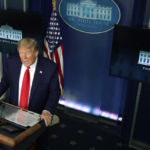US President Donald Trump has launched a sweeping initiative to reduce the size of the federal government, offering most federal employees the option to resign in exchange for eight months of pay. The controversial move is part of a broader effort to streamline government operations and cut federal spending.
A ‘Deferred Resignation’ Plan
According to an email sent to federal employees, workers have until February 6 to decide whether to opt into the “deferred resignation” program, which would require them to leave their positions by the end of September. The Office of Personnel Management (OPM) confirmed the plan, stating that those who accept will not be expected to work, except in rare circumstances. Additionally, employees choosing to resign would be exempt from Trump’s recent mandate requiring in-office attendance five days a week.
While the administration claims the measure could save the government up to $100 billion, many federal employees have expressed confusion and concern over the specifics of the offer. The email warned that future job cuts could follow for those who decide to stay, stating, “We cannot give you full assurance regarding the certainty of your position or agency, but should your position be eliminated, you will be treated with dignity.”
Political Backlash and Legal Concerns
The initiative has sparked widespread criticism from labor unions and Democratic lawmakers. The American Federation of Government Employees (AFGE), the largest federal workers’ union, condemned the move as an attempt to “purge” government agencies, warning that it could lead to severe disruptions in public services. Democratic Senator Tim Kaine also questioned Trump’s authority to implement such a program, stating, “If you accept that offer and resign, he’ll stiff you just like he stiffed contractors. He doesn’t have any authority to do this. Do not be fooled by this guy.”
White House Deputy Chief of Staff for Policy Stephen Miller defended the initiative, arguing that the federal workforce is “overwhelmingly left of center” and that it is “essential” for Trump to “get control of government.” He emphasized that the administration remains committed to shrinking bureaucratic structures and eliminating inefficiencies.
Comparisons to Musk’s Cost-Cutting Measures
The mass resignation offer bears similarities to an email sent by Elon Musk to Twitter employees in late 2022 following his acquisition of the company. Musk had asked employees to reply via email if they wished to remain at Twitter, leading to significant layoffs.
Trump has tasked Musk and businessman Vivek Ramaswamy with leading an advisory group aimed at reducing government regulations, spending, and staffing. Ramaswamy has since stepped away from the project to run for governor of Ohio.
Broader Policy Moves
The controversial proposal comes amid a flurry of executive actions from the Trump administration. On the same day, Trump issued a memorandum pausing federal grants, loans, and other assistance. A district judge has since suspended the order until next Monday, following widespread confusion over its potential impact on Social Security and Medicaid.
Additionally, Trump signed an executive order restricting access to gender-related medical treatments for minors. The order, titled Protecting Children from Chemical and Surgical Mutilation, seeks to prevent individuals under 19 from making “life-altering” medical choices. The order is expected to face significant legal challenges.
As Trump moves forward with his agenda to reshape the federal government, uncertainty looms over the long-term effects of these sweeping changes on public sector employment and government operations.
















